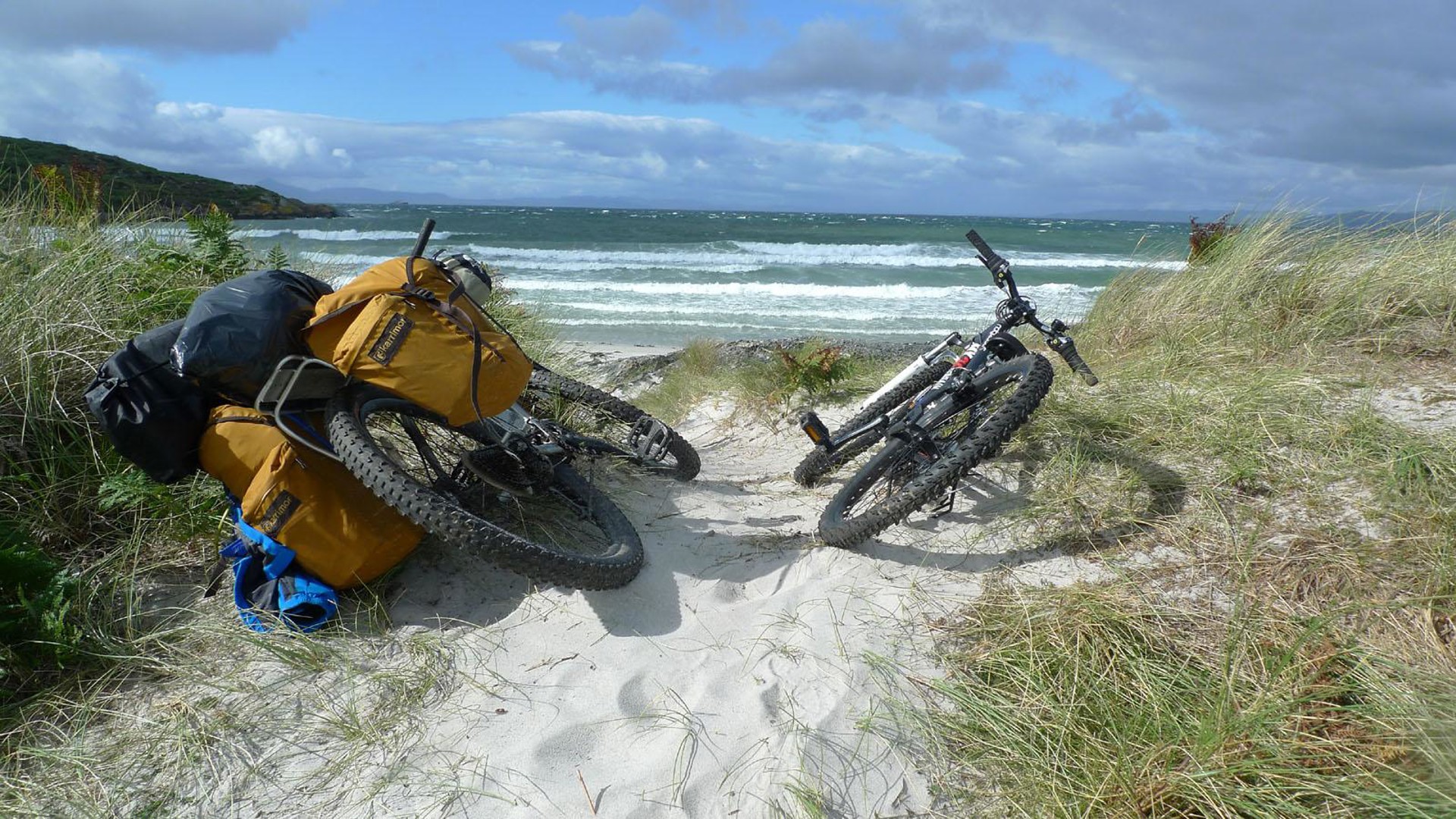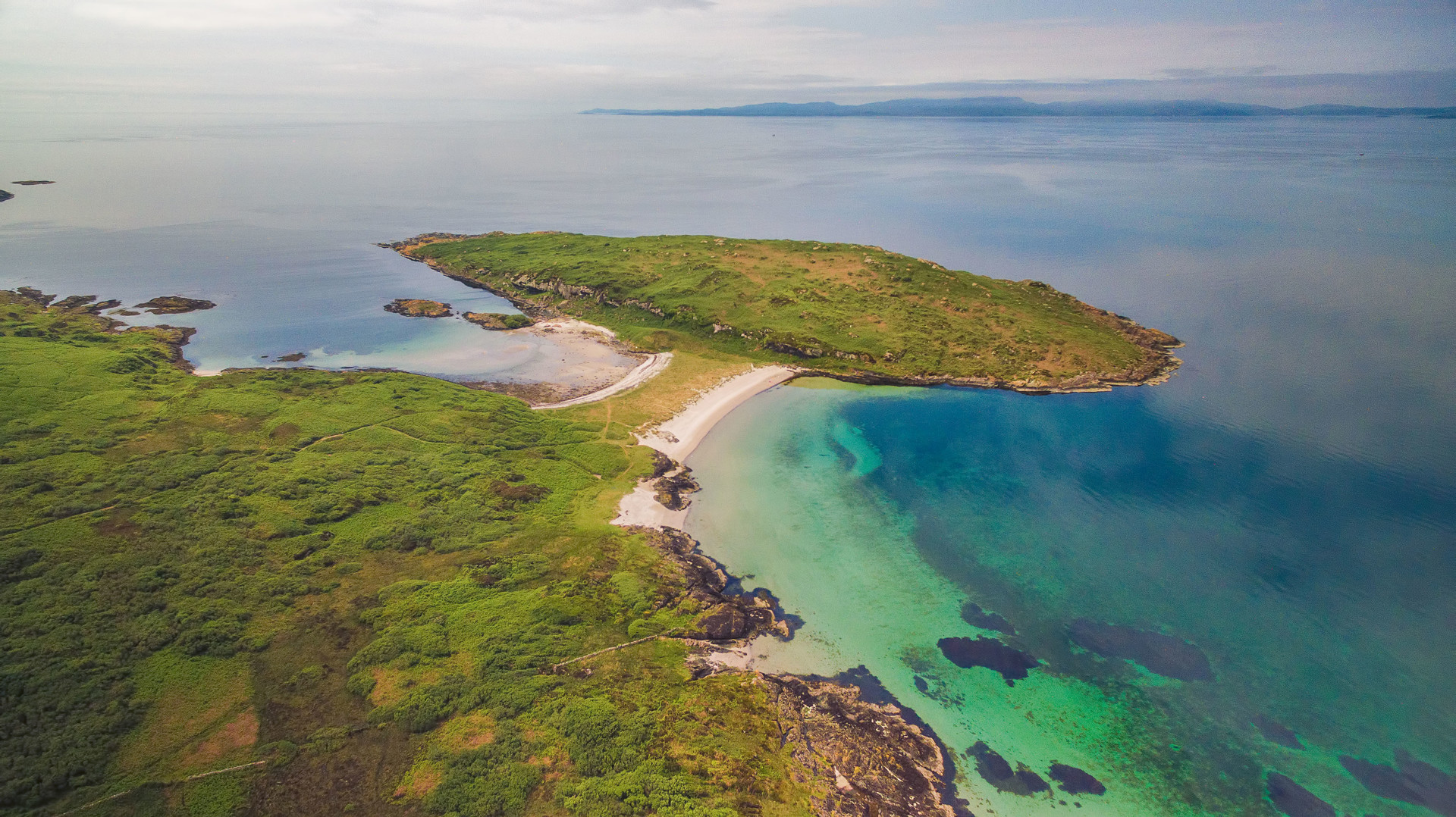



Stand Up Paddleboarding Scotland's Adventure Coast
Paddleboarding in Scotland has experienced huge growth and there’s no better place to paddle than the stunning inland and coastal waters of Argyll and the Isles. A network of freshwater and sea lochs offers flat, sheltered waters for beginners and those seeking calm and relaxation. For the more adventurous, the coastal waters are ideal for an exhilarating workout in the waves.
Wherever you choose to paddle, the clear waters, rich in biodiversity, will give you an incredible view of swaying seaweeds, scurrying crabs and silvery shoals of fish. You might spot otters, porpoises and dolphins, and it’s not unusual to receive a friendly nudge from a playful seal.
There’s plenty to see above the waterline too. The beautiful, ever-changing scenery boasts big skies, towering mountains, forested glens, historic castles and pretty sheltered bays. And most of the time, you won’t see another soul!
Why try standup paddleboarding?
The beauty of paddleboarding in Argyll & the Isles is it offers flat, calm waters alongside frothing surf. There’s something for everyone.
Gliding gently on a paddleboard allows you to get closer to nature and experience the water and scenery from a different perspective. It’s relatively easy to do, you don’t have to get wet, and it can be both calming and exhilarating.
And it’s good for you. It strengthens your core muscles, can improve posture and provides a gentle full-body workout. You’ll find your shoulders dropping and your mind drifting as the rhythmic strokes propel you along the water.
All in all, it’s a great boost for physical and mental health and, in sheltered spots, is easily accessible for all the family. Just hire a board and paddle, don a wet suit and a buoyancy aid and you’re ready to go!
Safety First
Please note: Stand-up Paddleboarding is not without risk. Featured locations and local businesses are featured for your information only. All activities are undertaken at your own risk.
Paddleboarding is a lovely way to explore the waters but it’s not without risk. Keep safe by following these paddleboarding safety tips from BSUPA, the British Stand Up Paddle Association:
- Get a BSUPA lesson.
- Wear a wetsuit.
- Wear a buoyancy aid.
- Check the wind and weather – ideally you need light onshore winds, under 10 knots.
- Avoid offshore winds.
- Check tidal flow and river flow is safe to SUP (under 2 knots.)
- Avoid all areas with fast moving water.
- SUP with others. Tell someone when you are going, when you expect to be back, and check in when you get back.
- Avoid any hazard or fixed object in the water by keeping a minimum of two board lengths away.
- Take your phone in a waterproof bag and tethered to your buoyancy aid.
- Wear a leash – coiled on flat water or straight in surf – for added safety buy a quick release type.
- If you get into trouble, stay with your board and summon assistance.
Best Paddleboarding Spots in Argyll
Local RecommendationsThe islands of Loch Lomond offer calm sheltered waters for beginners while more experienced paddlers can enjoy the open expanse of water. There are lots of places to launch a paddleboard and the views are tremendous. An important word of caution though; the loch is vast and has deep shelves the further north you go. The water can be very cold even a short distance from the shore. Always wear a buoyancy aid when paddleboarding.
Try:
- Duck Bay – a popular spot at the south end of the Loch. Launch from the beach. Parking is available and there are picnic areas to enjoy a spot of lunch.
- Luss – a gentle slope into the calm waters from a stone beach near to the car park, cafes and toilets.
- Tarbet – a slipway and narrow beach give access into the bay where Cruise Loch Lomond boat trips operate from the pier.
- Ardlui – at the north end of the Loch there is scope to launch and explore the remote east shore and the River Falloch.
There are a few holiday parks on the west shore with shore access where paddleboarding and other water sports can be enjoyed.
Loch Goil, a dramatic sea loch on the Cowal peninsula, is another top spot for stand-up paddle boarding. Surrounded by hills and forests, this sheltered loch is home to an abundance of wildlife and the magnificent Carrick Castle on the west shore.
Bute has great paddleboarding spots with several sheltered beaches offering access to the water.
West Loch Tarbert, close to the historic fishing village of Tarbert, is a long and narrow sea loch on the western side of the Kintyre peninsula where the ferry service to Islay operates. It’s a popular spot for water sports, with clear water, plenty of wildlife and fabulous views and scenery. The warm, shallow waters of Escart Bay are ideal for perfecting your paddling technique.
Carradale has a sheltered bay with a long sandy beach facing the Isle of Arran. It is well suited to novice paddleboarders.
Nearby, Saddell Bay has more of a walk to get to the shores. A wild and remote place to paddle, you can enjoy views of Saddell castle and ‘Grip’, the Antony Gormley installation, on the rocks below.
The waters around the coast of Oban are great for SUP and castle spotting. The sheltered sandy beach of Ganavan Sands makes for easy entry into the water and there’s parking and toilets nearby. A popular paddle is to head out north along the coast or towards the Isle of Lismore.
The yacht club, just south of Oban, is a great spot. Paddle out to the Island of Kerrera and then follow the coast south to take in the impressive tower house of Gylen Castle, or, paddle north along the coast of Kerrera to the marina to spot the ruins of Dunollie Castle on the mainland.
This is a busy ferry port so make sure you fully understand where the ferries are going and don’t paddle across the bay.
A port and marina on the west coast of Argyll, Craobh Haven is popular place to sail. There is also a small, sheltered bay which is ideal for paddleboarding novices. Be sure to stay in the bay as the wider area is not suitable for paddling without extensive local knowledge.
A popular spot to paddleboard. Paddle out to and around Castle Stalker or across to Lismore and around the coastline.
Tiree is Argyll’s top spot for water sports. It’s pristine white sands and near-guaranteed wind and waves makes it the perfect place to learn and practice your surfing skills.
This is a wonderful coastline to paddle around, with crystal-clear waters and small rocky islands. You might even spot a basking shark offshore!
The wind picks up easily around Tiree so we recommend you check the forecast to ensure it is blowing onshore where you plan to paddle, paddleboard in company and ensure someone knows where you are and when to expect you back.
There are several SUP spots within ten miles of each other. Try:
- Loch Bhasapol - an inland loch with calm waters which is perfect for novice paddleboarders.
- Gott Bay - an easily accessible sandy bay popular with families with clearly marked parking to protect the beautiful Machair.
- Hynish – this historic pier and slipway is a great location to launch and then explore along the coastline on a paddleboard.
SUP / Paddleboarding FAQs
Why do people kneel on a SUP?
For beginners this is an excellent way to get your balance and get used to being on a board. It is also a good way to get through surf as you leave a beach. If it is windy, by kneeling down you will drift less.
What equipment do I need?
As a minimum, you’ll need a paddleboard, wetsuit, buoyancy aid, paddle and leash.
You should also bring a waterproof bag in which to store your phone and tether this to your buoyancy aid.
We always recommend you wear a wetsuit. If you fall in, a wetsuit will help your body acclimatise to the cold water so it’s much safer than a swimsuit.
What size SUP do I need?
Paddleboards are available in many sizes and shapes from around 2.5m to 5.5m. It’s ideal to start with a board around 3.4m long by 75cm wide.
You need a good paddle, that is as long as your height plus 20cm, plus a heavy-duty leash that is the same length as your board.
Can I hire paddling kit?
You can hire kit from a few of places locally. Some offer equipment only while others will only hire equipment as part of an organised activity.
- Explore Lismore
- Craobh Haven Watersports
- Paddle Power and Adventure
What do I do if I get intro trouble or see another paddler experiencing difficulties?
Stay with your paddleboard. Call the coastguard on: Call 999 or 112 and ask for the coastguard in an emergency. (If you don’t have a signal, your phone will try to connect you to the nearest network.)




